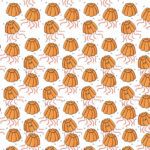


Wobbly Sea Monster
9th January 2020


New Magazines: Art, Fashion, and Alpacas! 24th-28th February 2020
28th February 2020Name
Olive Ridley turtles were given many different names over the years by lots of German scientists who kept discovering them. The English name we don’t have a clear reason for. The ‘olive’ part is because of the olive-green colour that adults have. The ‘Ridley’ part we do not know.
Features and Behaviours
Olive Ridley turtles grow to about 60cm in length, which is the same for males and females. When they hatch, however, they are only 5cm long! Adults weigh about 33-35kg but the babies weigh only 17g.
Their shells are rounded but slightly heart-shaped as it extends slightly over the shoulders. The arms of these turtles are a bit like paddles, perfect for swimming, and they actually have claws.
Olive Ridley turtles act in the same way as many other turtles when it comes to laying eggs. The females go back to the beach they hatched at to lay their own eggs. They all go back at the same time, dig a nest with their hind legs and lay their eggs.
These turtles live in warm, shallow waters, but they have been spotted in the open ocean.
Food
Olive Ridley turtles are mostly carnivorous, so they eat mostly meat. They eat a lot of jellyfish, urchins, sea snails, worms, crabs and other small marine animals. They also sometimes eat algae and fish eggs when they are a bit older.
Human relations
Olive Ridley sea turtles are classed as vulnerable as their numbers are going down.
There are a few reasons for this. Litter in the ocean means that the turtles get stuck in fishing nets, eat plastic bags because they look like jellyfish, and even ingest toxic waste.
Their eggs are also poached when left on the beach.
Luckily, some projects are collecting the eggs and taking them to a safe place until they hatch, then releasing them into the sea.
